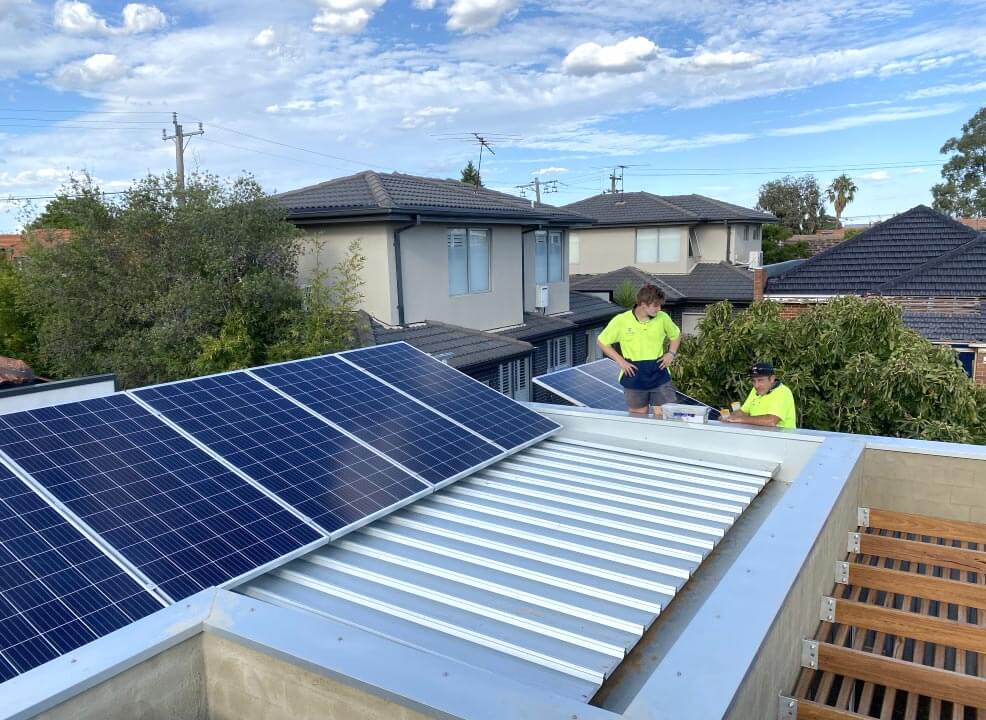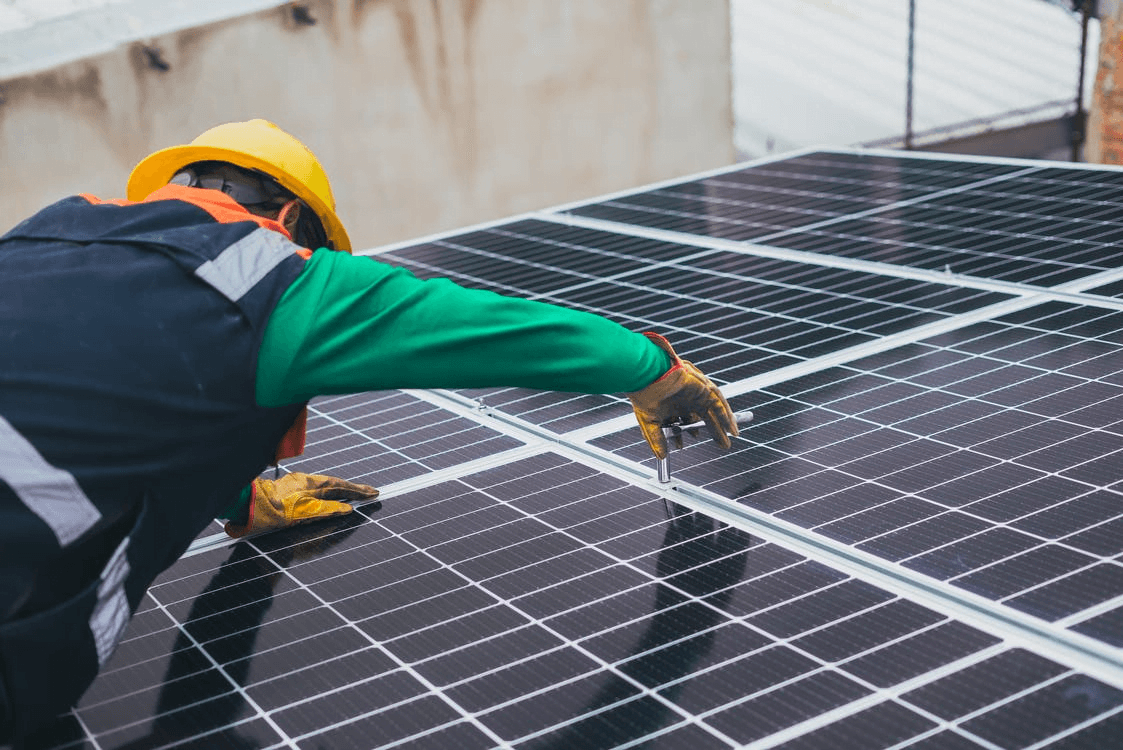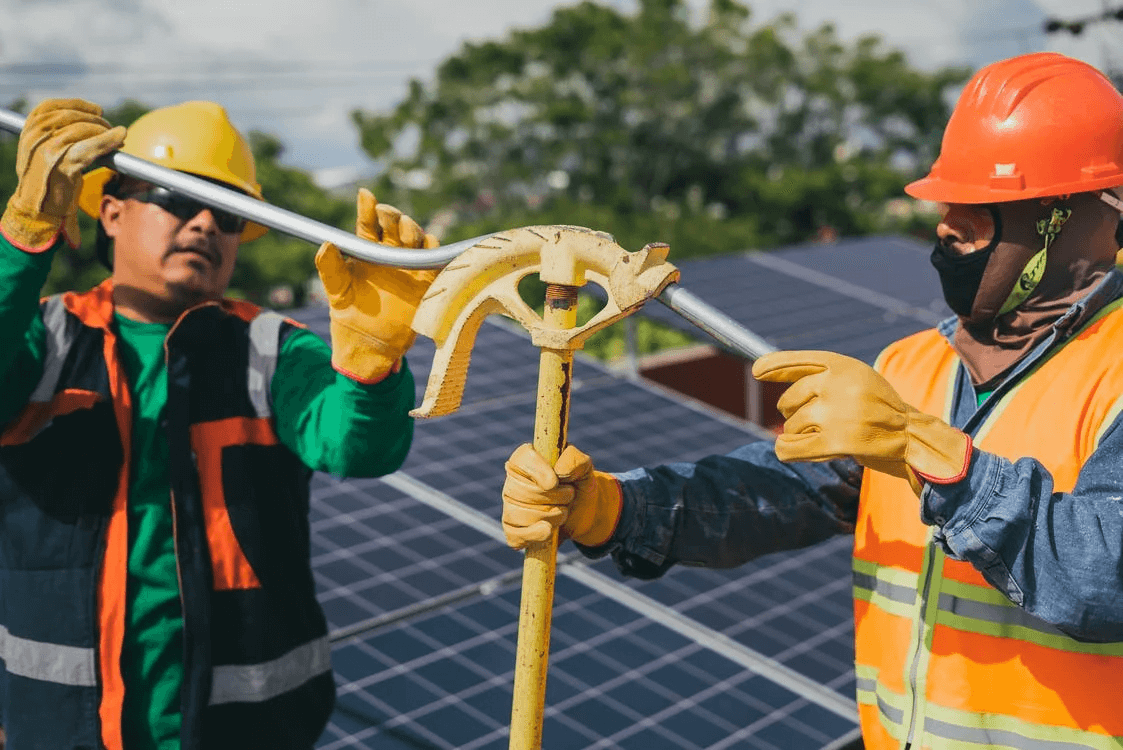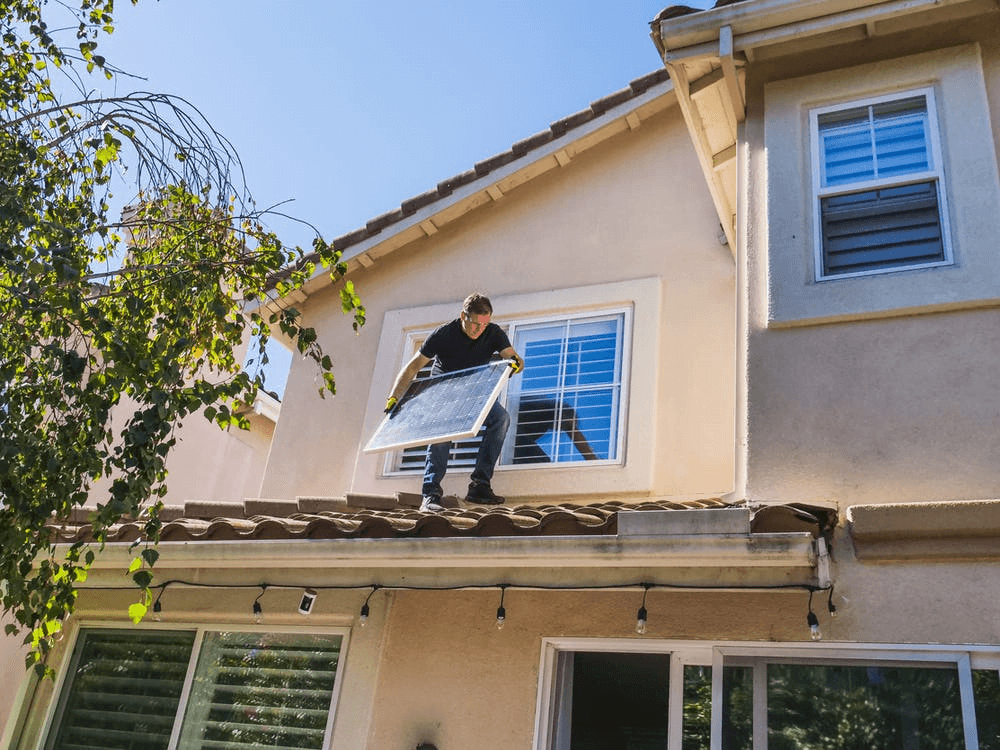Home Solar Panels Council Approval
Do I Need Council Approval to Install Solar?
The Australian government is keen to encourage its people to invest in renewable energy sources, with the goal of promoting a healthier environment and ensuring our communities remain unspoiled.
Since every building is different, you may need or may not be required to obtain a property and planning approval through your local council. Seek advice from your local planning body as early as possible.
In this article, we will help you with information and details by state so you will have a basic image and starting point.
Table of Contents
ToggleNEW SOUTH WALES
Do I need a permit to install solar in NSW?
According to Clean Energy Council (CEC), there are a few factors to consider when it comes to local council approval in NSW. Factors include:
- 10 kW or smaller system is “exempt development”, subject to conditions laid out in the legislation;
- Systems larger than 10 kW and smaller than 100 kW are “complying developments”, subject to conditions and require a complying development certificate (CDC) to be issued by the council or a private accredited certifier;
- Systems larger than 100 kW requires the development consent;
- Whether your property is within a heritage conservation area;
- The classification of your building under the Australian Building Code. Class 2-9 buildings may be subject to different approval requirements;
- The size and position of your PV system;
- The total weight of your panels at any one point of attachment to the roof;
- The design of your system;
- The structural integrity of the building;
- Whether additional electrical or construction work is required to accommodate the solar system.
Your CEC-accredited installer is obligated to complete a building survey to ensure the panels will not compromise construction integrity.

Strata Management permission for solar NSW
Strata management in NSW is currently governed by legislation including the Strata Schemes Management Act 2015 and the Strata Schemes Development Act 2015.
If your place has a Strata Plan, you will need permission to install a solar power system on any roof section. Many homeowners have successfully had by-laws passed in order to install solar collectors for homes that have their own roof. On the other hand, in buildings with a common roof such as multi-story unit blocks, there arent much successful applications mainly due to the cost, hassle, and legal implications.
Another type of strata agreement is in new housing developments. There can be restrictions on using a street-facing roof for solar power. In almost all cases permission is referred to using the roof along the side of your house or out the back. If you have a strata agreement it is important to check with your strata management company that you are permitted to install solar systems.
Informing neighbours
NSW residents don’t have an obligation to inform their neighbors when installing solar panels because they are designed to minimize reflection so that as much of the sunlight as possible makes it through the glass to hit the solar cells.
VICTORIA
Is a permit needed for solar in VIC?
To ensure the safety performance and reliability of the solar system installed under the Solar Homes Program and Solar for Businesses Program, all solar systems installed under the program must be listed on the Approved Products List.
The Clean Energy Council ensures solar PV meets the safety standards set by the Clean Energy Council, Energy Safe Victoria, and other relevant authorities. Also, from 1 July 2019, all solar PV installations must also comply with the requirements specified in Solar Victoria’s Notice to Market.

Solar panels (PV)
Every solar system installed in Victoria must be on the list of approved modules that meet the requirements to participate in the Solar Homes Program and Solar for Business Program as specified in the Notice to Market. The list is updated on a regular basis so always check it for the most up-to-date information.
Inverters
The Clean Energy Council maintains a list of approved inverters that meet Australian Standards for the use of solar PV systems.
The Solar Homes Program and Solar for Businesses Program require the installation of inverters that meet Australian Standards and also have the power quality functions volt-watt and volt-var.
From 1 July 2019, all installations must comply with the requirements specified in Solar Victoria’s Notice to Market.
Solar Hot Water system
The program requires the installation of an approved product from the Clean Energy Regulator’s (CER) Register of approved solar providers and the Victorian Essential Services Commission (ESC) Registered Products list, visit this website for more information.
City of Melbourne
Planning permits and controls
For existing buildings, you will need a planning permit to install a solar power system if:
- Your property is within a heritage conservation area or included on the Victorian Heritage Register
- The solar collectors are visible from the primary road (not a lane), or visible from a public park.
In other cases where a solar energy system primarily services the land on which it is situated, a planning permit is not required. If planning approval is required and not obtained, or planning permit requirements are not met, you may have committed an offense and be liable for certain penalties.
New developments
Local Policy (Clause 22.19) Energy, Water and Waste Efficiency of the Melbourne planning scheme regulates the requirements that every new development in the City of Melbourne had to meet. Development application must demonstrate that the new structure has the potential to achieve high environmental performance including energy efficiency. The installation of solar energy networks on new buildings can contribute to achieving environmental targets which are listed in the link above.
Solar PV can be integrated into the building structure, especially as part of the facades, roofs, and shading structures. Incorporating solar early can make installation easier and may reduce costs.

QUEENSLAND
Is a permit needed for solar in QLD?
From 1 November 2013, the installation of a solar system on the roof of a building is prescribed under Building Regulation 2006 as self-assessable work. This means that the installation is not required to be assessed by a building certifier as part of a construction development application. Repairing, maintaining, or altering an existing solar panel is also self-assessable work.
However, self-assessable construction work is still required to meet all relevant building codes and standards. Other related standards such as plumbing standards for solar hot water systems will continue to apply.
Clarifying that the construction development approval is not required for this type of work will help to reduce red tape, including any unnecessary money loss and delays, for owners wanting to install a PV system.
Local governments will continue to have the ability to address any amenity and aesthetics concerns relating to solar collectors through their planning instruments.
resource: https://www.hpw.qld.gov.au/__data/assets/pdf_file/0021/3657/buildingandplumbingnewsflash525.pdf
Is a license required?
Unless an exemption applies, a Queensland Building and Construction Commission contractor’s license is required to carry out or undertake to carry out the construction, erection, renovation, alteration, extension, improvement, or repair of a solar panel for a building if the value of the work exceeds the upper limit of $3,300 (including the cost of materials). The holder of the QBCC contractor license is not authorized under their license to work with electricity.
WESTERN AUSTRALIA
Do I need a permit for solar in WA?
A building permit is required before any construction work can commence. Sources of requirements are the Building Act 2011 and Building Regulations 2021. The definition of construction work includes:
- The construction, erection, assembly, or placement of a building or an incidental structure;
- The renovation, alteration, extension, improvement, or repair of a building or an incidental structure.
“Incidental structure” is defined as a structure attached to or incidental to a building. Therefore the placement of solar panels attached to or incidental to a building is considered construction work requiring a building permit unless an exemption applies.
Exemptions – When a Building Permit Is Not Required
The Regulations provide for the following exemptions:
• Schedule 4, Clause 1 – areas where a building permit is not required for certain work
Column 2 lists areas of the State where a building permit is not required for construction work for a Class 10 building or incidental structure which is considered to include a solar power system. In general, the areas listed for exemptions are certain regional areas and do not include metropolitan areas.
• Schedule 4, Clause 2 – kinds of building work for which a building permit is not required
Item 10 under this schedule provides an exemption for the attachment of photovoltaic panels or solar hot water systems to the roof of Class 1 or Class 10a structure that is not located in wind region C or D defined in AS 1170.2 – Structural design actions – wind actions.
Conversely, a building permit would be required for the installation of a solar energy system to the roof of a Class 1 or Class 10a structure located in a cyclonic area (wind region C or D) and to the roof of a Class 2-9 structure in any wind region – unless it is in an area listed in Schedule 4, Clause 1 for which a building permit is not required

Compliance With Applicable Building Standards
Solar panels must resist the appropriate wind loading, be securely fixed down, and comply with applicable building standards to the satisfaction of the building surveyor.
Where a building permit is required, a registered building surveyor will issue a Certificate of Design Compliance (CDC) to certify compliance with applicable building standards.
A certified building permit application must be accompanied by a CDC. An uncertified application (only for Class 1a and 10 buildings or incidental structures) requires the permit authority to arrange a CDC after the application has been submitted.
For works carried out under a building permit, the person named as the builder on the permit must ensure that on completion of the construction or incidental structure that it complies with the applicable building standards. Where a building permit is not required under the regulations, each owner of the construction or incidental structure is responsible for ensuring compliance with the applicable building standards.
Associated Work May Require a Building Permit
If the installation of the solar energy systems requires alterations or additions to the structure, such as additional strengthening to support the extra loads, then that work may require a building permit as those works are in addition to the actual attachment of solar to the roof. Such additional works would not, therefore, qualify for an exemption under Schedule 4, Clause 2, Item 10 described above.
It is the responsibility of the relevant permit authority to determine whether construction work needs a building permit. Under the Act, the public authority has powers to undertake enforcement action where they believe construction work has been done without a building permit.
resource:
https://www.commerce.wa.gov.au/
SOUTH AUSTRALIA
Do I require a permit to install solar in SA?
Grid-connected PV installations are required by the Electricity Act 1996 (the Act) to be installed in accordance with the following Australian Standards:
- AS/NZS 3000 Wiring rules
- AS 4777 (series) Grid-connected inverter systems
- AS/NZS 5033 Photovoltaic array systems
Complying With Revised Standards
The standards that apply to grid-connected PV systems are varied or substituted, which may result in revised or new requirements.
To give the electrical industry time to adopt changes made to standards, the Electricity (General) Regulations 2012 provide various exemptions from complying with revised standards. For example, if a standard is changed, electrical installation work can still be done according to the old standard as long as it is completed within six months of the new standard being published.
Latest versions of all standards for solar you can check with Standards Australia.
Below is the list of standards that regulates the installation of solar panels in South Australia:
| Standard | Publish Date |
|---|---|
| AS/NZS 3000:2018 Wiring Rules | 26 June 2016 |
| AS 4777-2005 Series (Parts 1, 2, and 3) Grid connection of energy systems via inverters | 20 May 2005 |
| AS/NZS 4777.2:2005 Grid connection of energy systems via inverters Part 2: Inverter requirements | 9 October 2015 |
| AS/NZS 4777.1:2016 Grid connection of energy systems via inverters Part 1: Installation requirements | 30 September 2016 |
| AS/NZS 5033:2005 Installation of photovoltaic (PV) arrays | 19 May 2005 |
| AS/NZS 5033:2012 Installation and safety requirements for photovoltaic (PV) arrays | 16 July 2012 |
| AS/NZS 5033:2012 Installation and safety requirements for photovoltaic (PV) arrays | 6 November 2014 |
Distribution Network Requirements
In addition to Australian Standards, grid-connected solar installations must also be installed according to the regulation of the distribution network operator, SA Power Networks. These requirements are detailed in SA Power Networks service and installation rules, visit this website for more information.

Licensing Requirements
Consumer and Business Services (CBS) has released a Guide for solar panel installers that clarifies the licensing requirements for solar panel work. Electrical work involved in solar panel installations must always be performed by a registered electrician. This includes installing the PV array, inverter, wiring, or any controls to convey electricity.
If structural building work is required for the solar PV installation, that work must be contracted by a licensed builder and must be supervised by a registered building supervisor.
Alterations, Additions, and Repairs to Existing PV Network – Safety Requirements
The Office of the Technical Regulator (OTR) has released a guide for electrical contractors to clarify the technical and safety installation requirements associated with alterations, additions, and repairs to existing grid-connected PV arrays.
An electrical contractor must assess the installation that they are working on and apply all relevant requirements of the applicable standards. If the work is on an existing PV system that has been installed incorrectly or doesn’t comply with the standards, the solar installer needs to correct that issue as part of the work. Any non-compliance issues should be noted on the electrical certificate of compliance.
An electrical certificate of compliance must be completed prior to energization and issued to the owner/occupier within 30 days for all electrical work associated with the PV system.
Installing Additional Capacity or Replacing Panels
If customers are in receipt of a solar feed-in tariff, any changes to their solar PV system may affect their eligibility for the tariff.
When SA Power Networks approves permission to connect to a solar PV system, the peak capacity of the system being approved is recorded and this is the capacity the customers are eligible to receive feed-in payments for. If the capacity of a system is increased beyond the approved peak capacity this is described as an upgrade and may affect any solar feed-in tariff the customers are entitled to receive.
SA Power Networks released Industry News PV Process Update in September 2013, which provides information on the installations of small PV systems and the legal obligations surrounding the replacement of PV modules or inverters.
TASMANIA
Is a permit needed in TAS for solar?
Installing Solar Panels – Development Work
Work must be done by a competent person/solar installer. A competent person is someone who has enough training, experience, and tools to allow them to do the work safely while working with any technical requirements. However, a licensed electrician must supervise the work. The electrician can also do the construction work if he is competent.
Getting Planning and Building Approval
An owner or their agent, someone who will act on behalf of an owner, can apply for planning and building approval. An agent might be the solar company, the electrician, or someone else. For planning approval requirements, talk to your local council.
Building approval is different from planning approval. Building approval requirements depend on whether the work is:
- Low risk
- Medium risk
- High risk
This depends on circumstances like the size of the panels and whether they will be flat on your roof. Your installer should be able to tell you if you need approval from a building surveyor or council permit authority.
Unlicensed Work
There are penalties for installing solar panels without the required approvals in place. You have the option of applying for retrospective approval but they can also make homeowners remove the installation if they identify serious violations.
A licensed electrician must inspect and fix any unlicensed electrical work done previously. Consumer Building and Occupational Services (CBOS) may take action against anyone undertaking unlicensed, illegal, or defective work.
Getting Connection Approval
Before installing solar panels, your installer needs to get connection approval from the energy network provider and retailer. Check with your installer to make sure they have done this. In Tasmania the energy network provider is TasNetwork. If you live on Bass Strait Island contact Hydro Tasmania for further assistance.
Contracts
Depending on the price of the work, the person arranging the installation may need to have a written contract form with you, before the project starts. This applies if the work is on residential zones and:
- It costs over $20,000 or
- Is part of a bigger project costing over $20,000
You must be provided with a copy of:
- The signed contract form and
- The Residential Building Consumer Guide
Under $20,000 where you don’t have a written contract, at the very minimum ask for a written quote from the installer.
Keeping Records
You should keep copies of documents relating to the solar panel installation in case issues arise. These can include:
- The contract or written quote from the installer/solar company
- Any manuals and warranty information for the system
- Planning information from the council
- Building approval documents from the installer, the local council, and the building surveyor
- Solar panel system documents – the electrician performing the installation will provide you with a complete set of documents.
Disputes
You have rights under the Australian Consumer Law (ASL). It depends on the problem as to what action you can take:
- Faults with the solar panel system – contact the retailer or manufacturer
- Defective electrical work – contact the electrician who installed the system
- Defective building work – contact the person who did the construction work and the building surveyor.
Resource: https://www.cbos.tas.gov.au/
Compare Solar Panel Quotes
Table of Contents
Toggle









